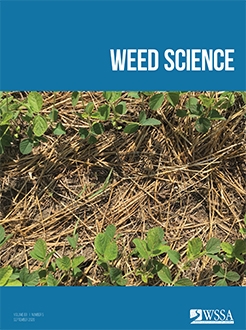Scotch broom [Cytisus scoparius (L.) Link] is a large nonnative, leguminous shrub that threatens native plant communities by rapidly invading recently disturbed sites, competing vigorously for soil water and nutrients, and imparting soil legacy effects that inhibit native plants. In the Pacific Northwest, logging debris retention after forest harvesting prevents or slows C. scoparius invasions. A series of studies were conducted to determine potential mechanisms by which logging debris modifies the light environment to limit germination and growth of C. scoparius. In laboratory studies, seed germination did not vary significantly (P > 0.05): (1) between presence and absence of light for several temperature regimes, (2) when exposed to red (660-nm wavelength) versus far-red (730-nm wavelength) light, and (3) across a range of red/far-red light (R/FR) ratios. These results indicate that modification of the light environment by logging debris or plant canopies has little or no influence on C. scoparius germination. In a study to simulate effects of variable mass of logging debris, “heavy” debris (2 kg m–2) caused biologically relevant reductions in photosynthetic photon flux density (PPFD) and R/FR relative to conditions under “light” debris (1 kg m–2). Cytisus scoparius germination did not differ significantly between simulated heavy and light debris; however, values of seedling root and shoot biomass under heavy debris were 16% and 71% of those observed under light debris, respectively. These results indicate that heavy debris limits biomass of C. scoparius seedlings, particularly roots, by reducing both PPFD and R/FR, which increases seedling vulnerability to summer drought or other stressors. Retention of heavy logging debris after forest harvesting has potential application on sites likely to be invaded by C. scoparius, as well as those sites with seedbanks containing C. scoparius.
How to translate text using browser tools
1 July 2020
Scotch Broom (Cytisus scoparius) Germination and Growth Responses to Light: Implications for Logging Debris Retention After Forest Harvesting
Timothy B. Harrington
ACCESS THE FULL ARTICLE

Weed Science
Vol. 68 • No. 5
September 2020
Vol. 68 • No. 5
September 2020
invasive plant species
light quality
red/far-red ratio
soil seedbank





